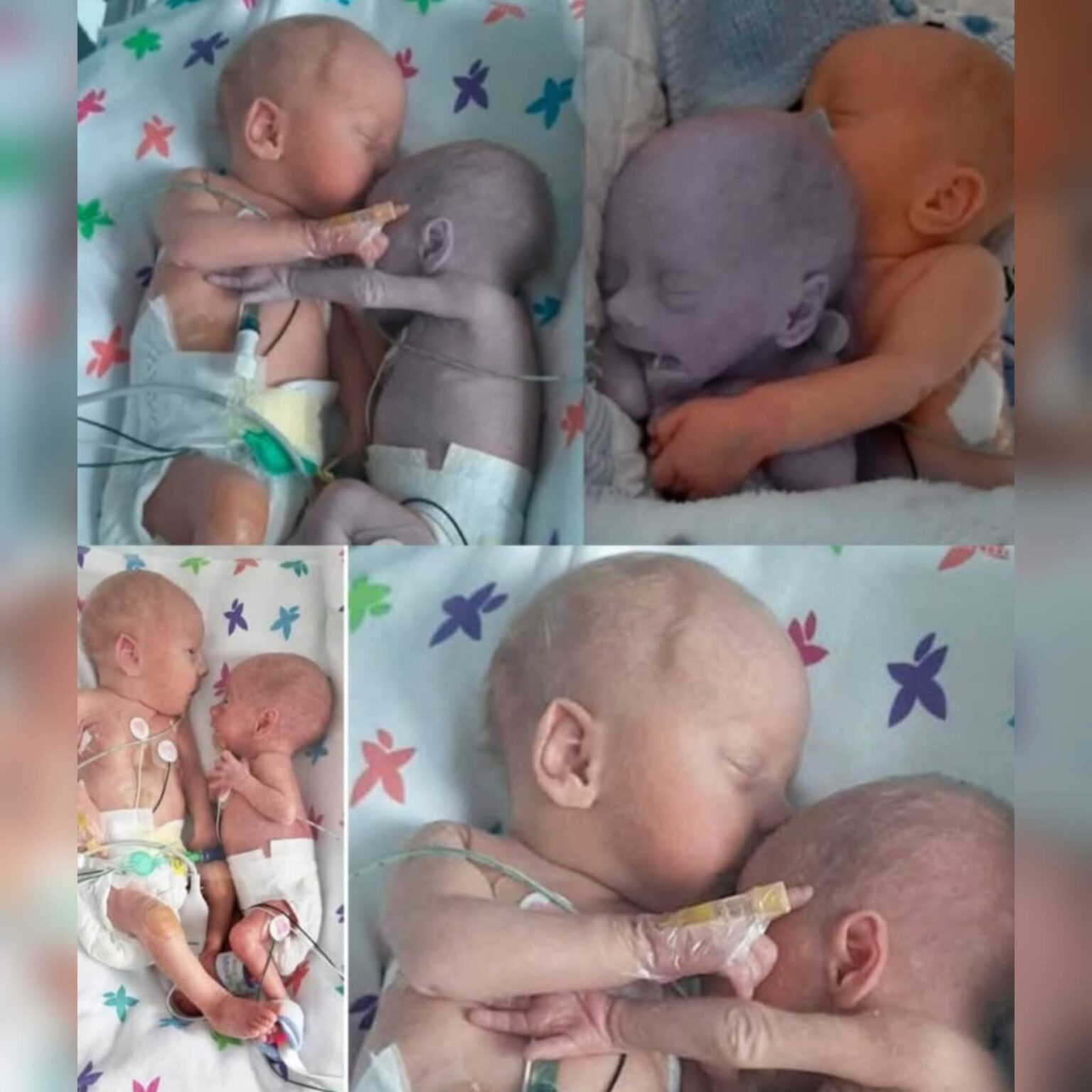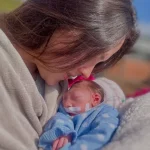A Nurse Places a Healthy Twin Beside Her Dying Sister — and a Miracle Happens

How a Simple Embrace in a Neonatal ICU Saved a Life
In 1995, in the softly lit neonatal intensive care unit of a Massachusetts hospital, two premature twin girls faced challenges their tiny bodies were barely prepared for. Named Kyrie and Brielle, the sisters shared the same womb but confronted very different battles. Kyrie, fragile and delicate, responded slowly but steadily to treatment. Brielle, however, continued to deteriorate by the hour. Continuous monitoring screens flashed warnings, and the quiet urgency in the room was a language the nurses knew all too well.
The Desperate Struggle
Brielle’s heartbeat was unpredictable, her breathing shallow and interrupted. Her skin was cold, her muscles weakening, and she was losing precious fat by the ounce—fat she could no longer afford to lose. Despite oxygen, warmth, and medications, Brielle continued to falter. Her tiny chest heaved unevenly, and by evening, the medical team quietly prepared the family for what they feared most: the night might be Brielle’s last.
At the time, U.S. neonatal care protocols required premature twins to be placed in separate incubators to minimize infection risk. Each infant had a carefully controlled microenvironment designed to maximize their chance of survival. Yet despite all this precision and science, Brielle did not respond.
A Nurse Acts on Instinct
Nurse Gayle Kasparian had read European studies suggesting that placing premature twins together, skin-to-skin, could stabilize one another. It wasn’t standard practice in her hospital—and certainly not policy—but watching Brielle struggle for every breath, fighting for her life with her last remaining strength, she felt a force stronger than protocol. Something instinctive. Something human.
After a moment of careful thought, as though taking a leap of faith, Gayle lifted Brielle and gently placed her beside her sister in Kyrie’s incubator.

The Miracle of Connection
At first, nothing seemed to change. The nurses held their breath, watching silently. Brielle lay still, exhausted from the fight for survival. Sensing movement beside her, Kyrie instinctively turned toward her sister. Her tiny hand, uncoordinated but deliberate, reached out and rested lightly on Brielle’s shoulder.
A simple gesture. A moment frozen in time.
Then the monitors began to shift.
Brielle’s breathing became steadier—not perfect, not strong, but undeniably better. Her oxygen saturation, long a struggle, gradually rose. Her erratic heart rate began to stabilize. The entire neonatal unit leaned in, witnessing a phenomenon that was at once skeptical and awe-inspiring. The only variable that had changed was the presence of her sister.
Kyrie, still fragile and tiny herself, wrapped her arms around Brielle, offering a protective embrace. Whether it was warmth, heartbeat, familiarity, or a deep, inexplicable connection between the sisters, the effect was undeniable. Within hours, Brielle’s condition stabilized. Her skin warmed, her breathing normalized, and her heart beat evenly. What had seemed impossible was transformed into hope.
A Gesture That Changed Neonatal Care
News of the embrace spread quickly among hospital staff and soon beyond the unit. Photographs of the tiny arm wrapped around the struggling twin—later called “the lifesaving hug” by the press—touched hearts worldwide. It wasn’t just medically remarkable; it was profoundly human, a testament to the power of connection as a form of healing.
In the years that followed, hospitals across the globe reconsidered neonatal care approaches. The practice of placing twins together or providing close skin-to-skin contact—now widely known as “kangaroo care”—became recognized as life-saving. Research confirmed what that instinctive nurse had felt: for premature infants, physical closeness can stabilize vital signs, regulate temperature, reduce stress, and significantly improve survival outcomes.
Before Research, There Was Love
Long before studies and standardized protocols existed, there were just two sisters, tiny and fragile, each fighting for life. One growing weaker, the other reaching out. In that quiet moment, an embrace changed everything.
It wasn’t loud.
It wasn’t dramatic.
It wasn’t supernatural.
It was just a hug.
And it saved a life.











